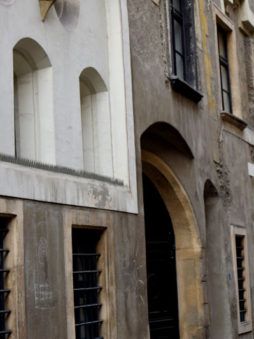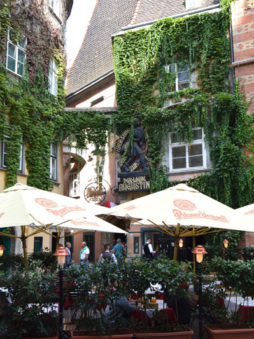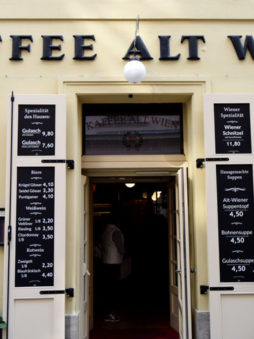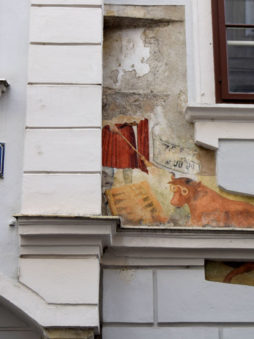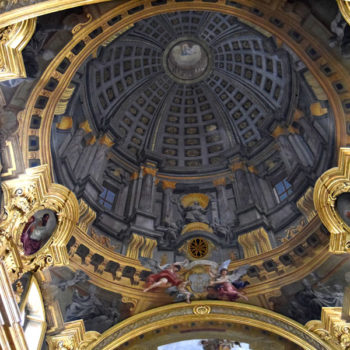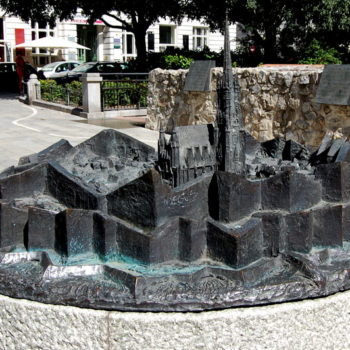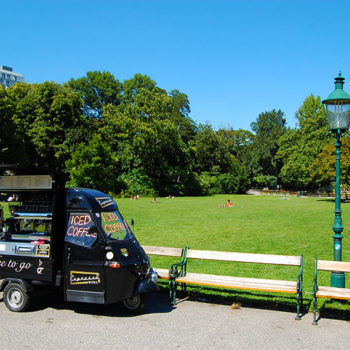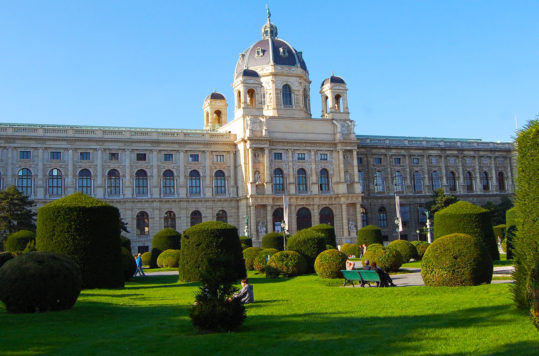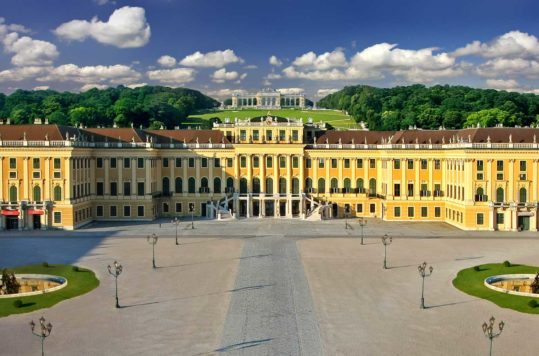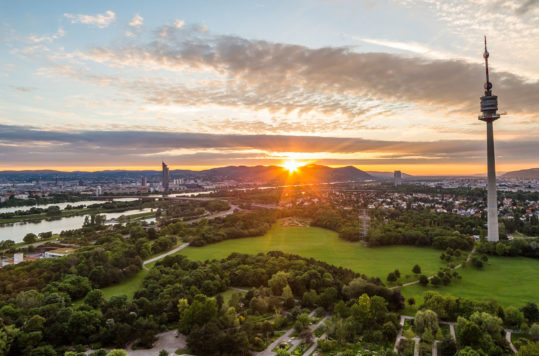Vienna is perfect for city walks. So we stroll from Schwedenplatz to Stadtpark and glimpse Vienna’s long history. We’ll also get a taste of the Viennese culinary heritage along the way.
Innere Stadt, Vienna’s historical city centre within Ringstrasse, is a delightful place to discover on foot. You find everything from narrow alleys, picturesque houses, and small idyllic squares to majestic palaces, sumptuous cathedrals and beautiful parks. The first of our Vienna city walks takes us from Schwedenplatz to Stadtpark. Schwedenplatz, where several buses, trams, and subway lines meet, is a great place to start.
Schwedenplatz
A bustling street life meets us as we get off the tram on Schwedenplatz. The square got its name after World War I, acknowledging the help Sweden gave the new Austrian Republic. While most people hurry in and out of trams and buses, others relax and enjoy something good to eat at one of the many outdoor restaurants or take a quick snack at one of the traditional Viennese hot dog vendors. Nonetheless, we will not succumb to the temptation of bratwurst and head off to find Hafnersteig. The little cul-de-sac got its name from the stove-makers who lived and worked here during the Middle Ages. After heading up a few staircases, we reach the so-called “Greek quarter” and Griechengasse.
Griechenviertel
One of the most peculiar houses in Vienna has to be Griechengasse No. 4 in Griechenvirtel. The house built in the 1400s has a weird and fascinating disorganized facade. It stands out among Vienna’s beautiful and classic symmetrical facades. Countless renovations have left a patchwork of styles, and nothing seems to be on the same level. This little piece of Vienna called the “Greek Quarter” resulted from a peace treaty that allowed Greeks who lived in the Ottoman Empire to settle down in Vienna. As a result, Greek merchants from the Levant aggregated in a few small streets in this part of Vienna, which became the Griechenvirtel (Greek quarter).
< Click on the images to enlarge >
Vienna’s oldest restaurant
We walk up through the little alley (see the main picture above) and pass the Griechenbeisl (Greek Inn), Vienna’s oldest restaurant. Despite several name changes since its inauguration in 1447, the eatery has always served dishes from the local cuisine. It is incredible to think that food has been served continuously on these premises for 570 years!!! The beautiful brick building beside the restaurant also sticks out from the building next to it. The Greek Orthodox Church (Griechenkirche zur Heiligen Dreifaltigkeit) has been there since 1787. Continuing our city walk, we turn right (with the church behind us), stroll 50 meters beyond Fleischmarkt and turn left into Köllnerhofgasse.
From the gallows to Gutenberg
After about 100 meters, we reach the small square Lugeck. I’m sure the vast majority of people sitting and eating at the outdoor restaurant are unaware that in 1529 there were gallows used to hang thieves on this spot. From the 1200s to the 1700s, the square was dominated by a meat market. In stark contrast to the sinister gallows of the 16th century, a statue of Johannes Gutenberg was placed here in 1900. After taking a minute to admire the inventor of the movable-type printing press, we continue around the corner and into Bäckerstraße.
Real Viennese Soup
We have worked up a small hunger during our walk, and it is time for a little break and something to eat. At Bäckerstraße 9, there is an excellent old-fashioned café, the Kaffee Alt Wien. The Austrians love soup, and so do we. Hence, we often stop at the Alt Wien whenever we are in town for an Alt-Wiener Suppentopf. Do not be fooled by the slightly shabby interior of Kaffee Alt Wien. Its red plush sofas, brown armchairs, and faded theatre posters are the real thing. Nevertheless, the food is good, and the service is typical Viennese. A few stray tourists find their way to the café right inside the door or to the restaurant at the back, but you will mostly hear Viennese spoken.
< Click on the images to enlarge >
Backgammon playing cow
After finishing the tasty soup, we picked up our camera and street map and headed back onto Vienna’s streets. We turn left and continue a few meters along Bäckerstraße, reaching number 12 for another curiosity. Although we must have passed by it numerous times before, we finally noticed it. On the facade, a brilliant fresco from the 1700s shows a cow playing Backgammon. The fresco dates from the 1400s, reappeared during a refurbishment in the early 1980s and was preserved for posterity. Furthermore, if you fancy seeing more impressive frescoes, you do not have to venture far.
Astonishing ceiling frescos
Fifty meters beyond the backgammon-playing cow, the street opens to a small square, and the baroque facade of the Jesuit church reveals itself on the left. Nonetheless, the dull exterior of the church doesn’t in any manner tell what’s inside. We have visited many churches and cathedrals in Austria, but the decorations in the Jesuit church are nothing less than spectacular. Sit down, look up and enjoy the ceiling frescos. Then, after taking in the amazing artwork in silence, we left the church in awe.
The old university of Vienna
Moving on across the square, we turned left and strolled down the Bäckerstraße. Passing through the old university of Vienna (Alte Universität), we almost felt the wisdom seeping through the ancient walls. Students have soaked up wisdom and knowledge here since the first school was built in 1237. Nevertheless, we continued under the arches and through the next building. We pass the Spanish restaurant TintoRosso before arriving at Dr Karl Lueger Platz and the Stubentor.
Advertisement
Stubentor
Much of today’s central Vienna derives from the significant redevelopments of the mid-1800s. Before the redevelopment, the city centre of Vienna was within a large city wall. One of the few visible remains is, among others, the Stubentor (city gate). Yet it’s hard to imagine what it used to look like. Thus, the city model on the sidewalk gives you a good idea of how Vienna used to look like. Nevertheless, after spending a few minutes orienting ourselves in medieval Vienna and snapping some pictures of the remains of the city gate, it’s time to go sightseeing. We continue outside what used to be the old city walls and cross the Ringstrasse (Parkring) and head into the greenery.
Wiener Stadtpark
Today’s central Vienna derives from the significant redevelopments in the mid-1800s. Before the redevelopment, the city centre of Vienna was surrounded by a massive city wall. The Stubentor (a city gate) is one of the few visible remains. Still, it is hard to imagine what it used to look like in its heydays. Nonetheless, a small bronze model of Vienna on the sidewalk gives you a good idea of how the city used to look. After spending a few minutes orientating ourselves in medieval Vienna and snapping some pictures of the remains of the city gate, we continued our sightseeing. Finally, we crossed the Ringstrasse (Parkring) and headed to the nearest park.

